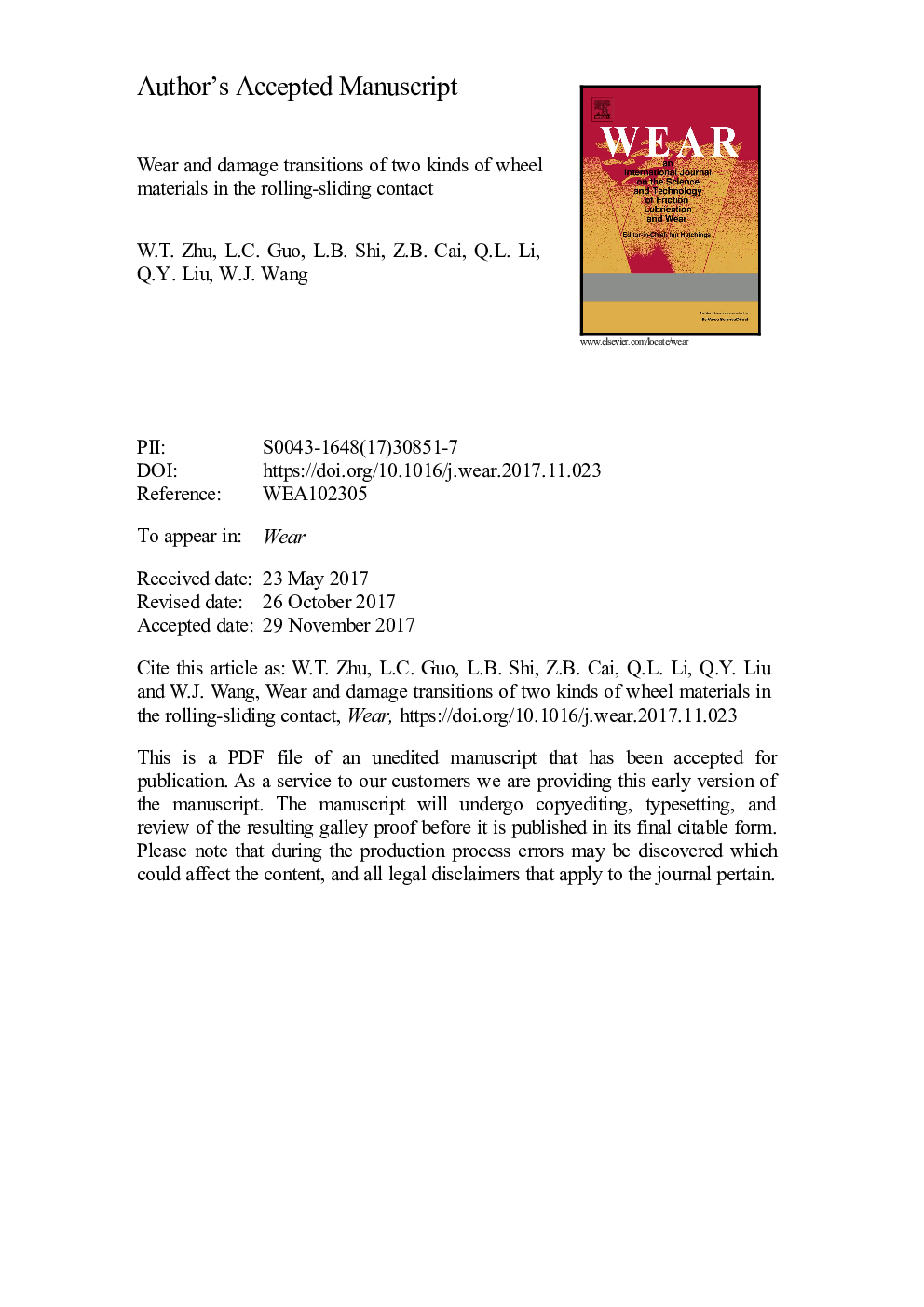| Article ID | Journal | Published Year | Pages | File Type |
|---|---|---|---|---|
| 7003991 | Wear | 2018 | 34 Pages |
Abstract
Wear and damage transitions of two kinds of wheel materials under different slip ratios conditions were explored using a rolling-sliding wear apparatus. Wear debris was analyzed using X-ray diffraction, Raman spectrometer and X-ray photoelectron spectroscopy. The results indicate that the evolution of wear rate of wheel materials can be divided into three regions: linear wear region, non-linear wear region and undefined wear region. The wear debris is mainly composed of Fe, Fe2O3 and Fe3O4. The relative content of Fe3O4 achieves a maximum value under the slip ratio of 12% condition. The transition from linear wear region to non-linear wear region is due to the wheel oxidation, while the transition from non-linear wear region to undefined wear region may be attributed to the formation of white-etching layer (WEL). A wear and damage mechanism mapping is constructed based on the wear and damage behaviors of wheel materials. Specifically, the dominant wear mechanism transforms from oxidative wear to fatigue wear and then changes back to oxidative wear with the slip ratio increasing.
Related Topics
Physical Sciences and Engineering
Chemical Engineering
Colloid and Surface Chemistry
Authors
W.T. Zhu, L.C. Guo, L.B. Shi, Z.B. Cai, Q.L. Li, Q.Y. Liu, W.J. Wang,
